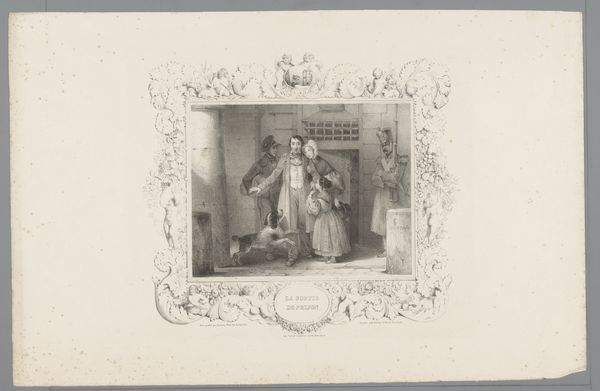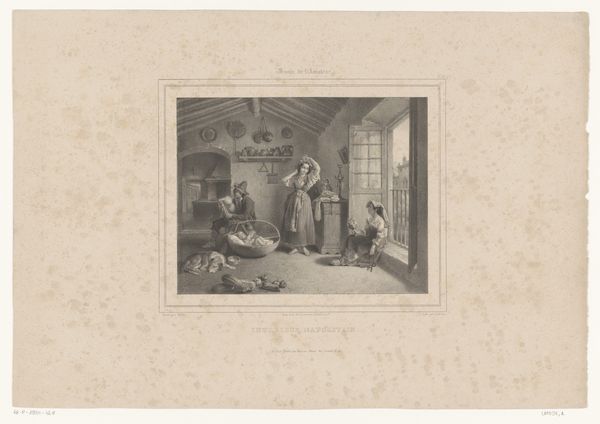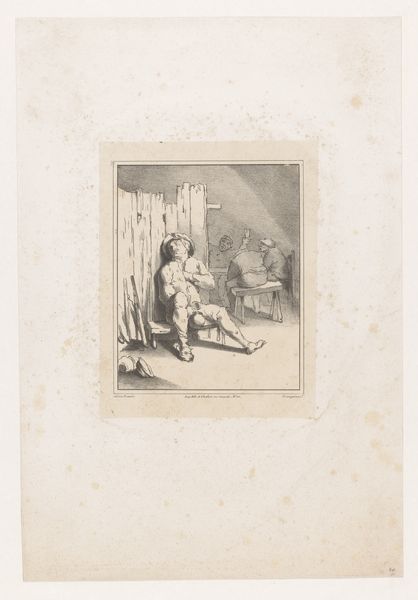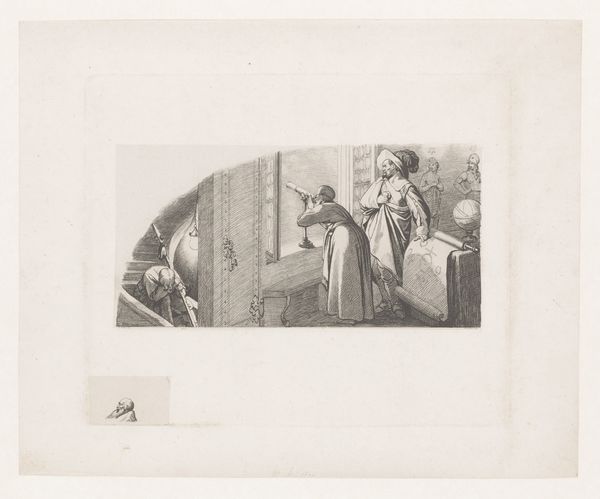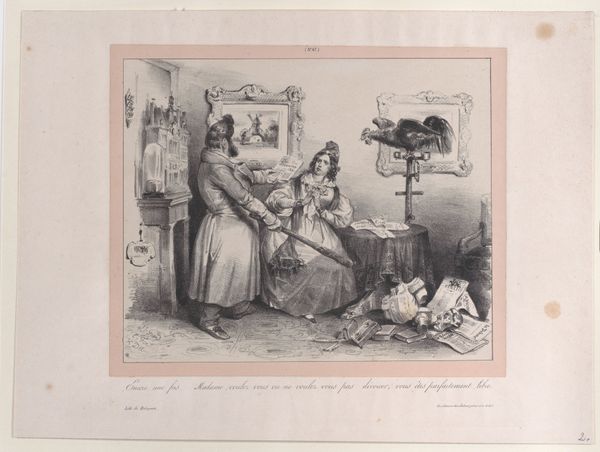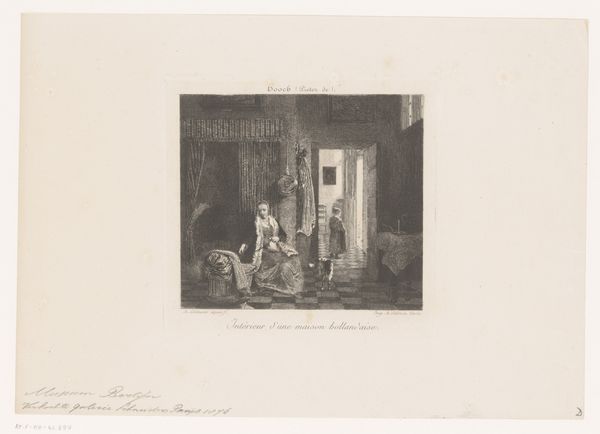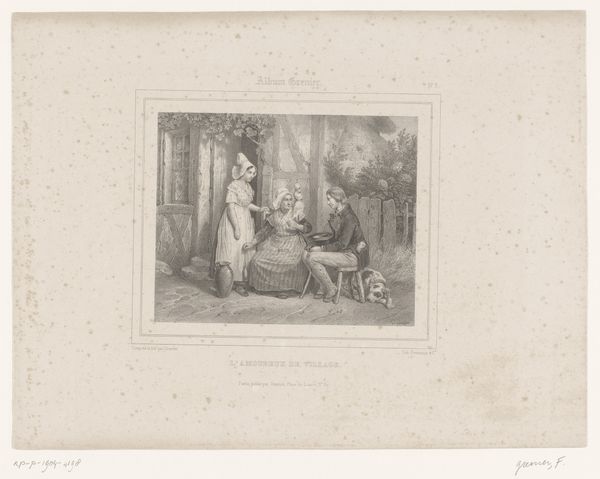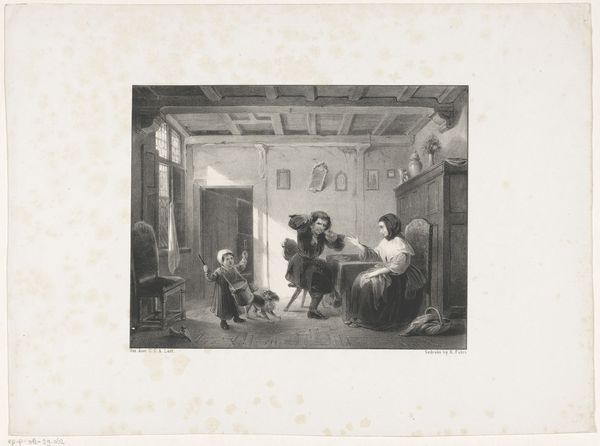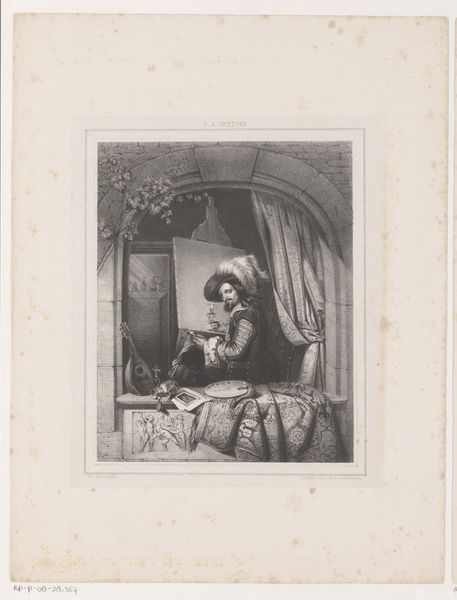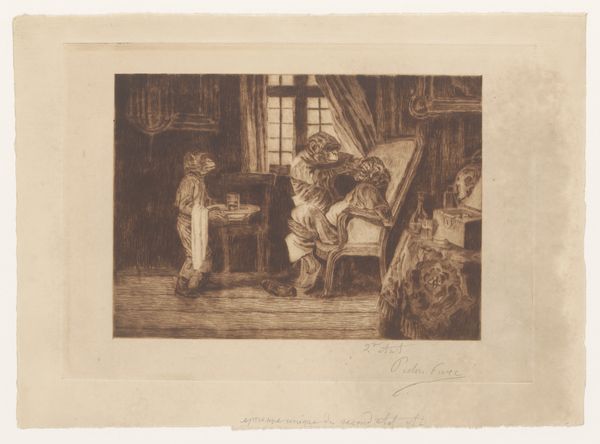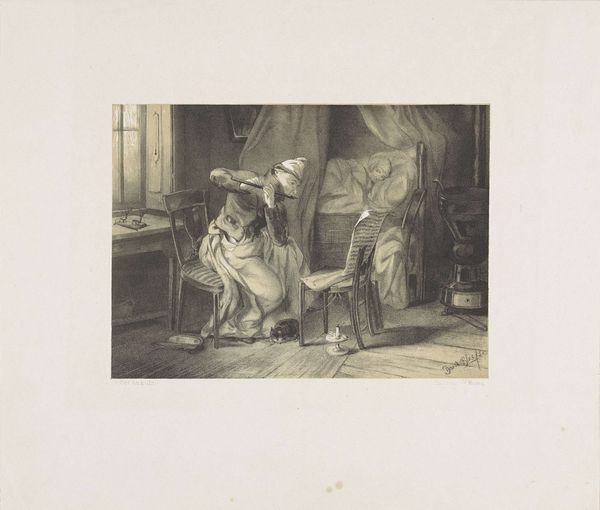
drawing, lithograph, print, pencil, engraving
#
portrait
#
drawing
#
lithograph
# print
#
caricature
#
pencil sketch
#
old engraving style
#
figuration
#
romanticism
#
pencil
#
genre-painting
#
history-painting
#
engraving
Dimensions: height 224 mm, width 296 mm
Copyright: Rijks Museum: Open Domain
Editor: This is Jules-Joseph-Guillaume Bourdet’s lithograph "Man en vrouw met levensgrote visitekaartjes", created in 1836. It's incredibly detailed! The sheer scale of those calling cards framing the figures is striking and rather humorous. What stylistic choices stand out to you in this piece? Curator: Indeed. Let's consider the spatial organization. The foreground is dominated by these oversized cards, yet the background establishes a sense of domestic intimacy. How does this tension between foreground and background affect the viewer's interpretation, focusing strictly on the visual balance, scale and composition? Editor: I see your point. The large cards in the foreground seem to flatten the space, almost like a stage set, while the details in the room, such as the painting above the mantle, give depth. Do the framing and interior composition emphasize elements of Romanticism through a rigid geometry? Curator: A provocative suggestion. It might be worthwhile to see how the engraver is playing on both! Notice the texture achieved through the lithographic process, especially in the rendering of fabrics and the lace bordering one of the cards. This juxtaposition of textures within the monochromatic scheme constructs meaning. Editor: That’s a fascinating observation. So, we’re encouraged to really focus on the forms themselves and the relationships between them. It highlights the print medium itself as an independent object, correct? Curator: Precisely. Through that very lens we observe how this print transcends representational art. Have we overlooked an underlying message embedded within those relationships between textures, the framing of images, or that precise, linear rendition, thus reflecting an artistic dialogue about how a medium defines its message? Editor: Looking closer at just the print, void of cultural and temporal factors, shifts the initial impression drastically, focusing our attention toward formal methods. Thanks! Curator: My pleasure. I think we both gained a different perspective appreciating those visual elements.
Comments
No comments
Be the first to comment and join the conversation on the ultimate creative platform.
